Mazda 3 Sedan and Hatchback Luggage Test | Trunk comparison

A major reason for buying a hatchback is for added cargo space and versatility, right? Seems logical enough. It's certainly a reason I've been fond of them over the years. And since so many SUVs these days are just glorified hatchbacks, it certainly stands to reason the buying public has reached this conclusion as well.
To test this hypothesis and potentially bust this myth, Mazda kindly provided three vehicles that are virtually identical apart from their body style: the Mazda 3 sedan and hatchback, as well as the Mazda CX-30 crossover that's really just a raised and rebodied 3.
On paper, in descending order, the CX-30 is tops at 20.2 cubic feet of space behind the back seat, the Hatchback has 20.1 cubic feet and the sedan has 13.2. OK, let's see how the order turns out once luggage is used.
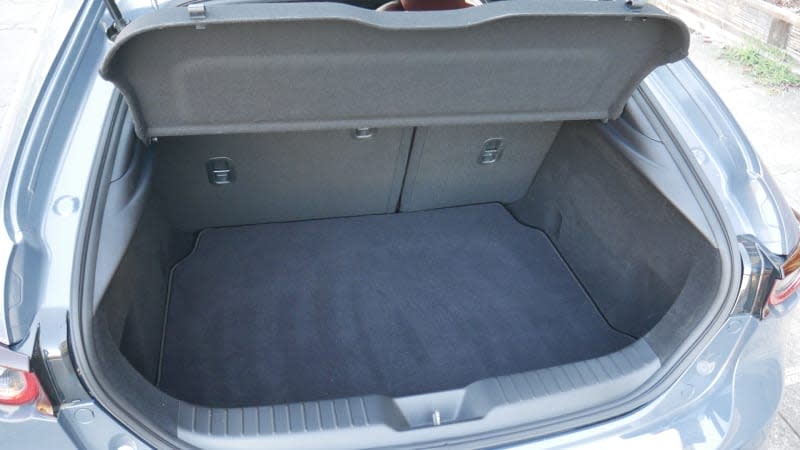
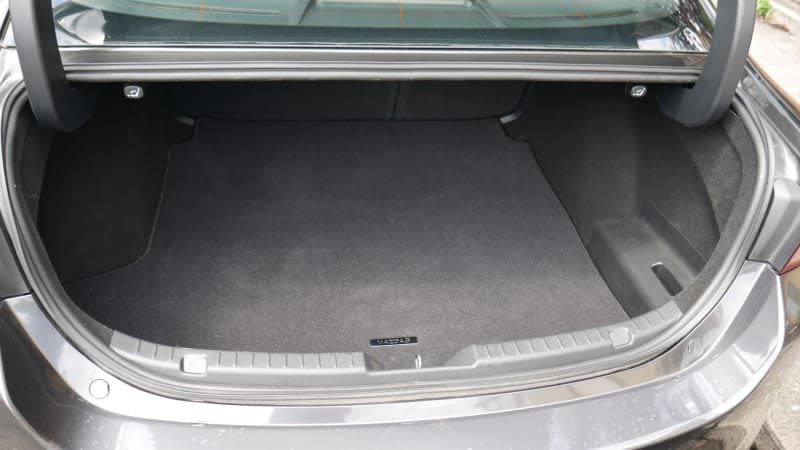
Here is the 3 Hatchback on the left and 3 Sedan on the right. Immediately, the sedan doesn't look that much smaller than the Hatchback. Actually, doesn't it look bigger?
Below is the CX-30.

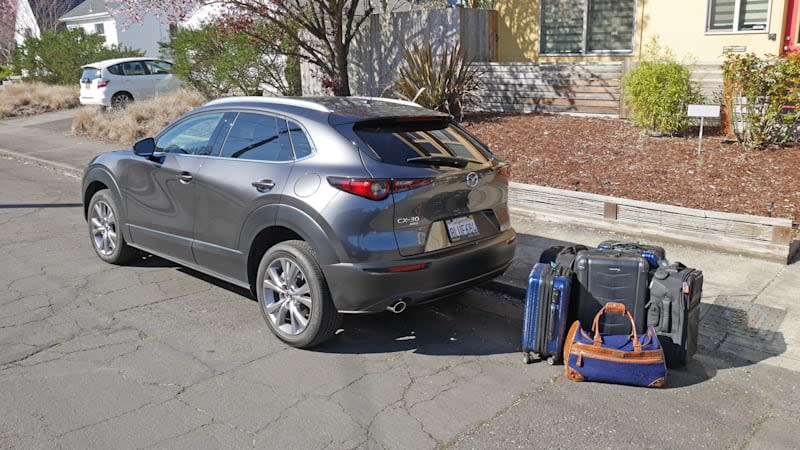
Note that this CX-30 did not include its rigid cargo cover, but already, you can start to see the difference between 3 Hatch and CX-30. The crossover has more space above the back seat line than the Hatchback. So, even if the 3 Hatch has more cargo area length, the CX-30 has more height. That's why you have virtually equal cargo capacity numbers despite having different spaces.
To that point, let's bring in the bags. As in every luggage test I do, I use two midsize roller suitcases that would need to be checked in at the airport (26 inches long, 16 wide, 11 deep), two roll-aboard suitcases that just barely fit in the overhead (24L x 15W x 10D), and one smaller roll-aboard that fits easily (23L x 15W x 10D). I also include my wife's fancy overnight bag just to spruce things up a bit (21L x 12W x 12D).
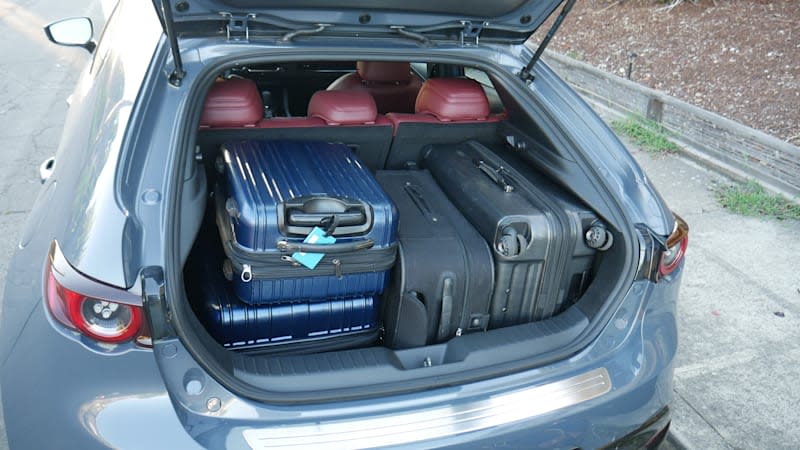

CX-30 for the win (above right) as all the bags fit. The fancy bag and smaller roller are slightly blocking the rearward view, but you can still see out and the bags won't fly forward. Importantly, they also fit when closing the CX-30's hatch.
They won't if you attempted the same formation in the 3 Hatchback, which can't fit the fancy bag or one of the midsize rollers. And no, you can't fit the fancy bag in the middle there — the hatch wouldn't close on top of it. A smaller duffel will, however.
So, although the 3 Hatch has a slightly longer space, the difference doesn't matter as much as the CX-30's extra height in this usage case.
So, the CX-30 beats the Hatchback by more than the nearly even specs would indicate. The sedan has to be toast, right?

Wrong! This was surprising. All the bags fit inside the Sedan, whereas two needed to stay behind in the Hatchback. I was definitely surprised. So what gives?
The Sedan's trunk is longer than both the Hatchback and CX-30's cargo areas, which is the key factor. Yes, the Hatchback has more volume, but since most of its excess is above the seat line and compromised by the hatch, it's not really an advantage. Maybe if you had a larger box or something bulky, the Hatchback would be the better choice, but then the CX-30 would be better still in that scenario.
When it comes to luggage, the Mazda 3 Sedan is actually the best here despite having the least amount of space on paper. True, the CX-30 can hold as many bags, but its rear view was still compromised AND you needed to remove the cargo cover to do it, meaning things can be seen from outside. They're hidden away in the Sedan.
In the end, the order is in fact Sedan, CX-30 and Hatchback.
Now, a few more odds and ends.

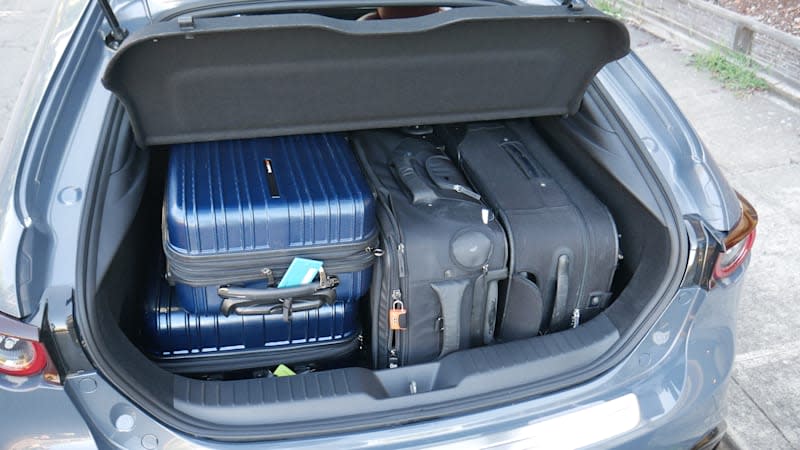
Here is the Hatchback's rigid cargo cover. Keeping it in place doesn't make that much of a difference. You can still carry four bags, but the biggest roller won't fit. Another midsize roller does instead.

Also, the sedan has egg crusher hinges. They dip down pretty far, but they did not impede the luggage in this test. Also, although I didn't take a picture of it, the Sedan and Hatchback both have 60/40-split back seats.
Related Video:
You Might Also Like




